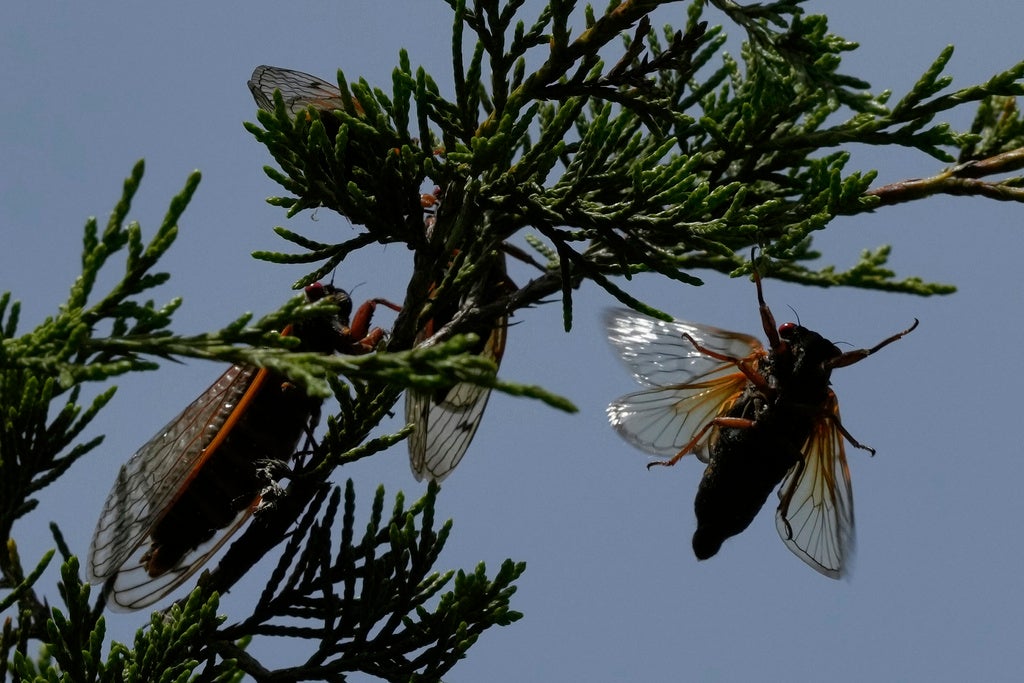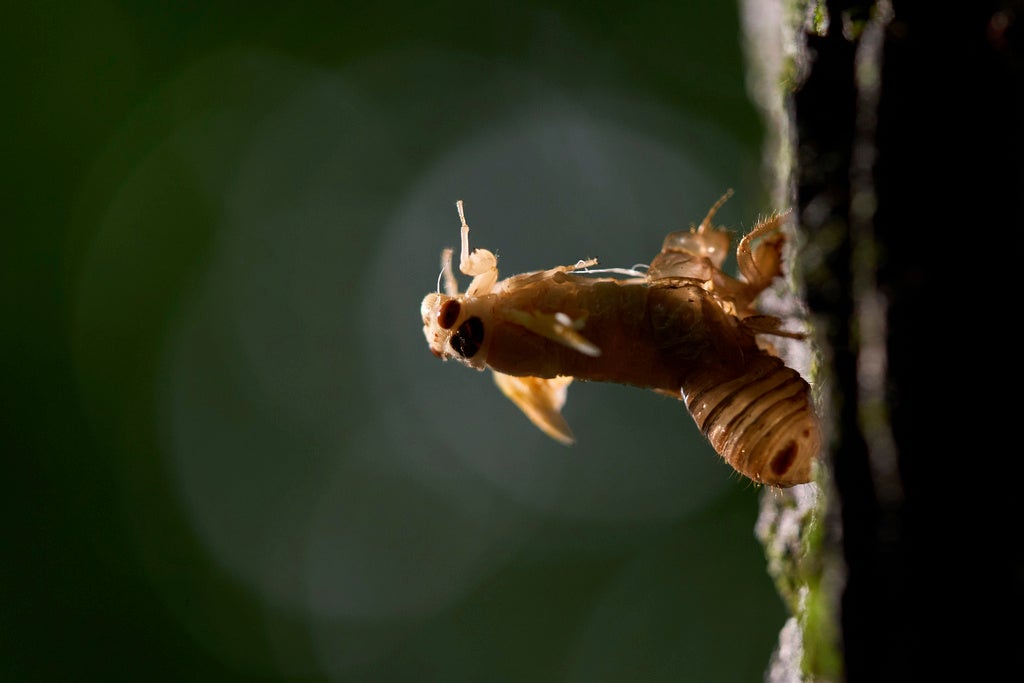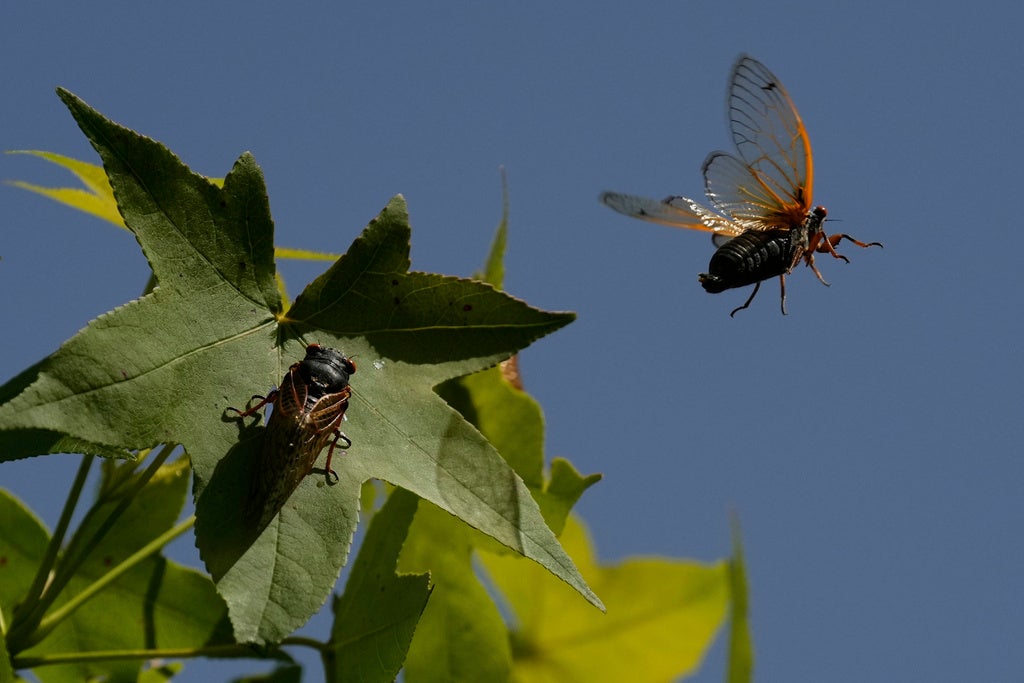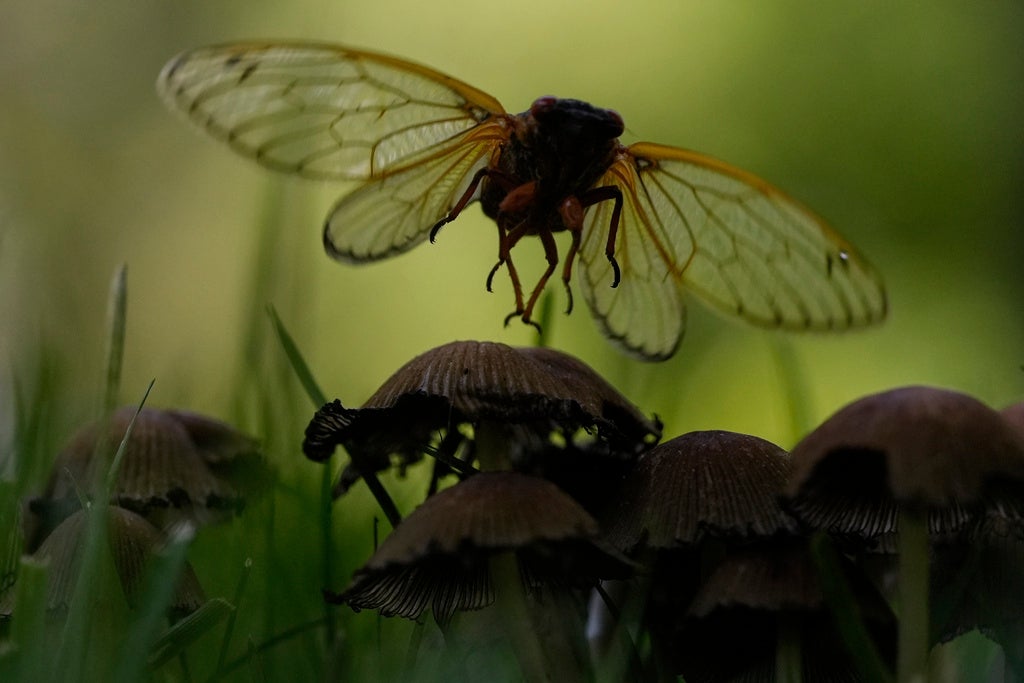Cicada Season Is Here As Billions Of Screaming Insects Emerge
CINCINNATI (AP) — Another cicada invasion is here. The large Brood XIV, which emerges every 17 years, is making for a spectacular natural event as billions of periodical cicadas emerge across parts of the Eastern U.S., including in Georgia, southern Ohio, Kentucky, Cape Cod in Massachusetts, and Long Island, New York.
When spring warms the soil to 64 degrees Fahrenheit (about 18 degrees Celsius), these cicada nymphs dig their way up to the surface after their long development period.
Advertisement

Carolyn Kaster via AP
On the right night, usually after a warm spring rain, near trees showing cicada pilot holes and chimneys, they will emerge — so many that they can be heard crunching through the grass to climb up trees, plants, people or any vertical surface. There is a forceful quality about it.

Carolyn Kaster via AP
Advertisement
Once they find footing, they begin the molting process. They shed their nymphal skin, emerging soft, vulnerable and pale yellow. They have two large red eyes on the sides of the head, three small, jewellike eyes called ocelli in the center, and gossamer wings. In a few hours, their bodies harden and darken, and they fly up to the treetops.

Carolyn Kaster via AP
Then the screaming begins — the loud buzzing, screaming sound males make when they are looking for a mate. It leaves ears ringing.
Advertisement
Throughout this process, cicadas serve as a source of protein for both wildlife and humans. They survive by sheer numbers.

Carolyn Kaster via AP
After mating, females lay eggs in tree branches and die shortly after. The hatched tiny nymphs fall and burrow into the ground, and the cycle begins again.
Advertisement

Carolyn Kaster via AP
Cicadas are part of the magic of spring when the yellow and purple irises are blooming, and the green is new and vivid. The cicada show takes place in every light of the day and the dark of night. The pull is the power and beauty of nature and time.

Carolyn Kaster via AP
Advertisement

Comments are closed.